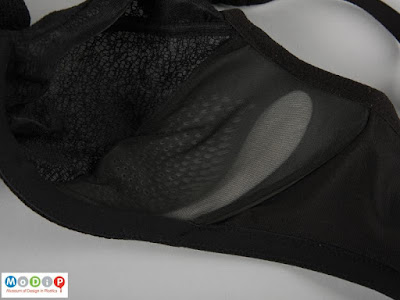These past 20 weeks of the student creative project with MoDiP has been a journey of exploration and transformation from museum artefact to finished fine art piece.
I started my journey through proposing my idea of machine tufting. I had planned to take it in this direction from the very start. However, through the methods and perspective gained from my current MA Fine art studies, I was influenced in applying my strengths of experimentation as seen in a selection of thumbnail ideas (See Fig1&2). This pathway led to me examining alternative methods, mainly digital, while keeping the colour schemes and key theme of shape abstraction. I utilised a mixture of computer software and drawing to help make this possible.
 |
Figure 1 Thumbnail Sketch of tufting
|
 |
Figure 2 Thumbnail sketch of sculpture
|
While enjoyable, I found myself at the stage where I could look at this digital direction subjectively. I decided that the work fell somewhat flat and did not fully represent myself or how I envisioned my interpretation of the MoDiP objects. The 3-dimensional elements and presence of texture were both more significant than I had originally realised when taking this digital detour. I felt it was now time to go full circle and return to machine tufting in order to complete this project (See Fig 3&4).
 |
Figure 2 Digital drawing of Eve
|
 |
Figure 4 Digital Drawing of Juicy
|
Though I have now reached the end of the project having used techniques I had originally planned, I feel the piece embodies the experience. The previously mentioned digital detour has helped inform the style of the piece significantly.
My work showcases the energetic and playful attributes that the artefacts I chose hold. While I started focusing on one MoDiP object at a time, the project developed, and I began seeing the potential of the objects together and intermingled especially through collage (See Fig 5). The still life imagery I created could offer more than my singular drawings could (See Fig 6). By this I mean the space around and interaction between each object and how this provides intrigue and interest. This was reinforced by taking the time to source a variety of yarns and making sure colours reacted a similar way.
 |
Figure 5 Final decided collage
|
 |
Figure 6 Still life with all artefacts
|
Translating the work from small to large scale was a learning curve. I had to allow minute details to change to suit the form of the piece, while still maintaining the feeling of my initial collages. The act of collage making itself was time consuming, however it allowed me to experiment with abstract shapes and colours in order to create a vast range of compositions (See Fig 7&8). There were so many possibilities to try out!
 |
Figure 7 Puzzle pieces!
|
 |
Figure 8 Some of the collages that were made
|
The final piece is 180cm x 40cm and is one of the biggest tufted pieces I have ever produced. This presented its own unique set of challenges, mostly practical, but with the freedom of the project this could all be overcome (See Fig 9&10). I found this aspect of the project allowed me to really pull on all my strengths, both mentally and physically, to really enjoy the piece I have produced.
 |
Figure 9 Image showing start of the process
|
 |
Figure 10 Showing last stages of process through colour and texture
|
 |
Figure 11 Final piece
|
I have thoroughly valued my time as a student creative and working with MoDiP. I would highly encourage any student to apply for this opportunity in the future and to just let go and have fun. I feel this tufted piece I have produced really embodies these elements and shows that inspiration from plastics really does not need to be translated with plastics. There are a multitude of ways I can now see this could have gone which only makes me wish I could have this opportunity again. Going forward with my studies and further on I will continue to build upon this experience and the knowledge and will certainly be coming back for more inspiration.
In conversation and working with the MoDiP team, I have also been able to learn more about the museum, artefacts and exhibitions. This experience has been very rewarding and enjoyable. I would also like to say a huge thank you to all of those at MoDiP for giving me this opportunity.
Jak Hansford - MA Fine Art

























